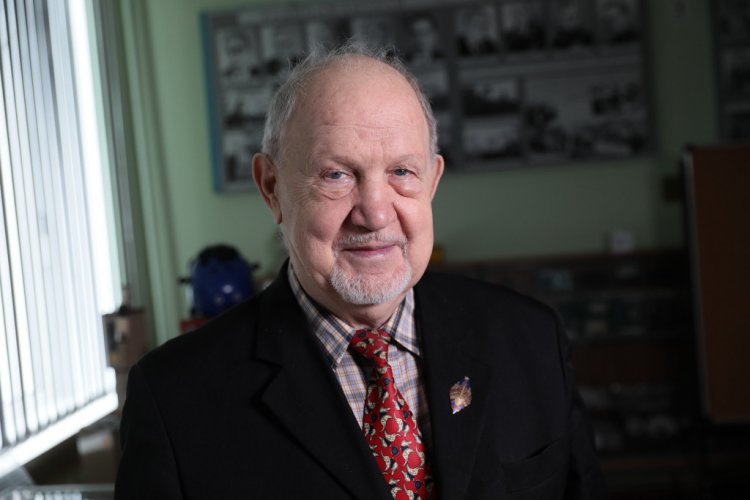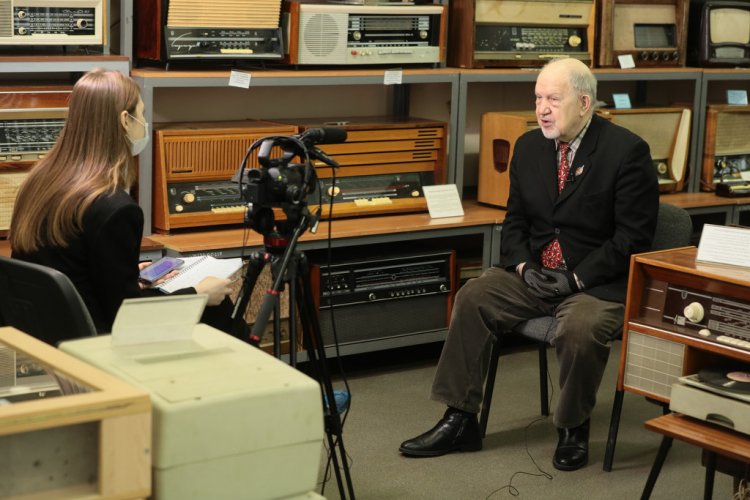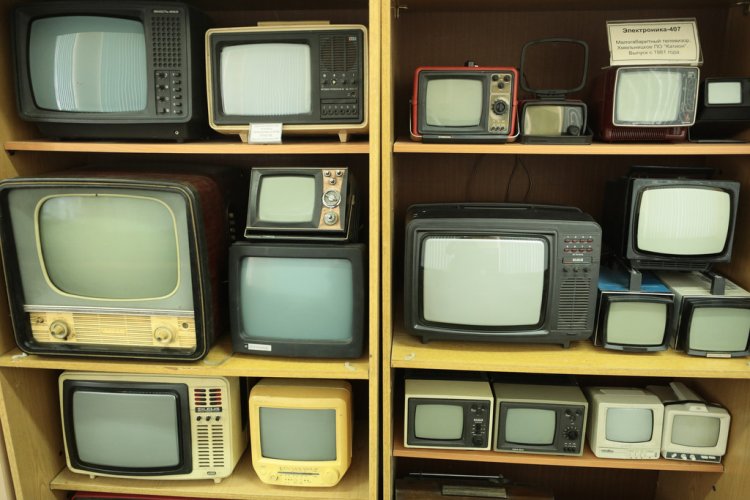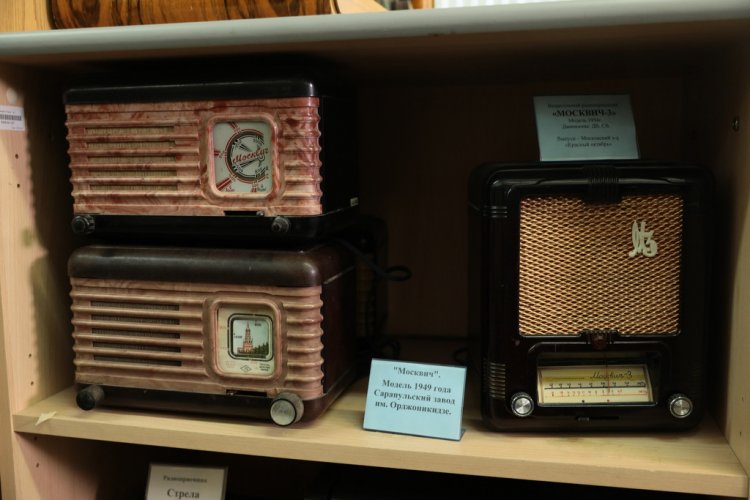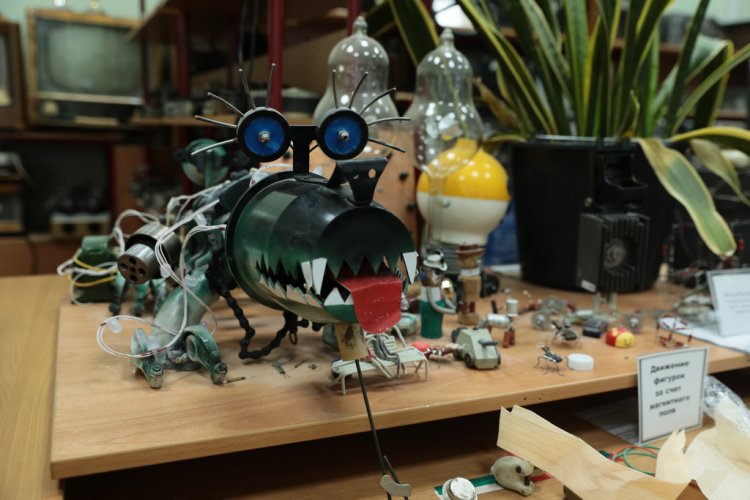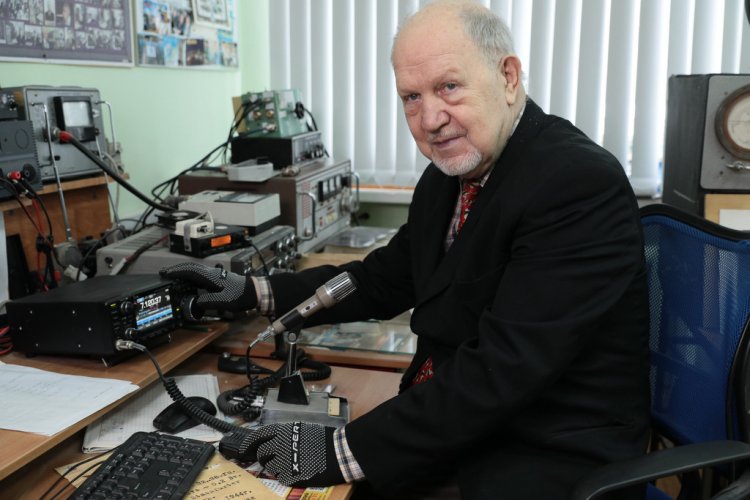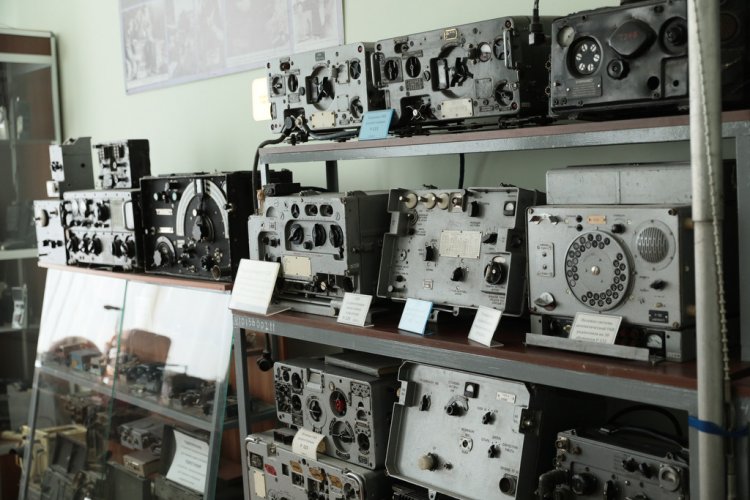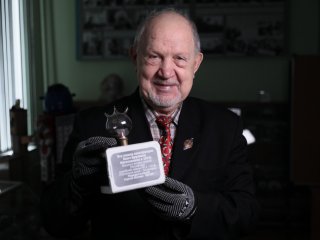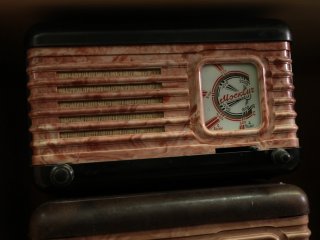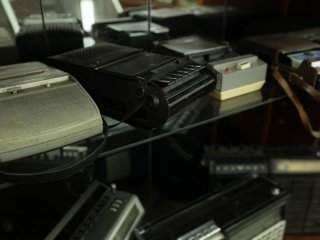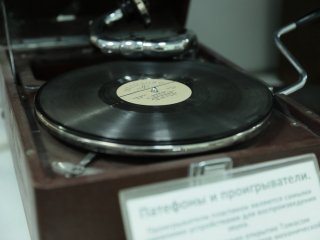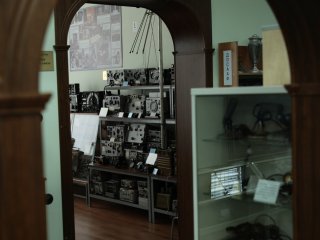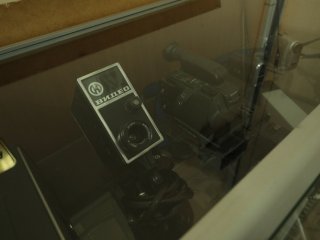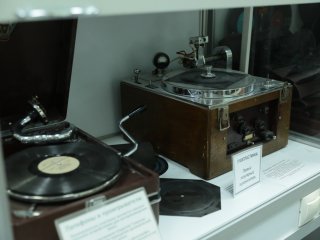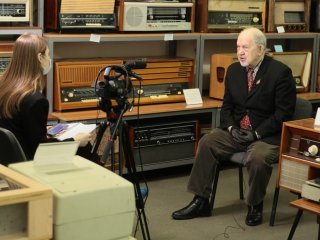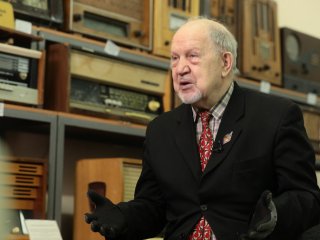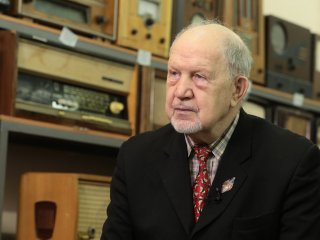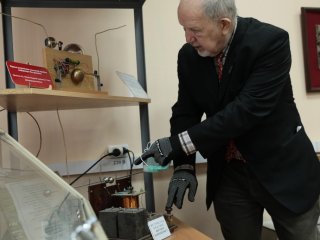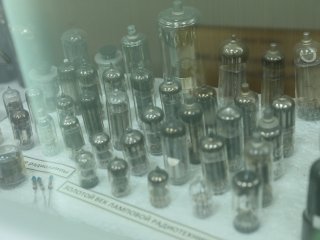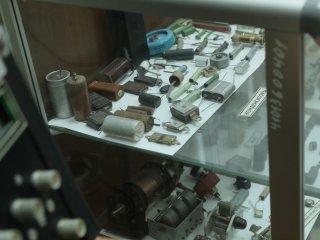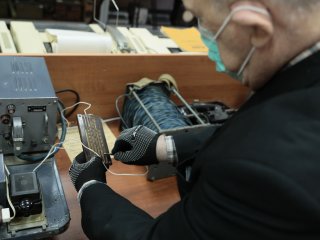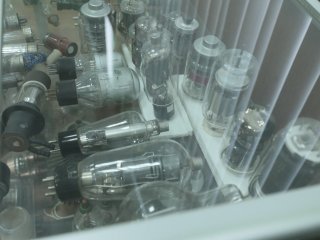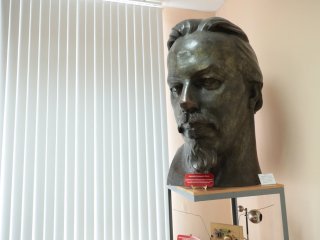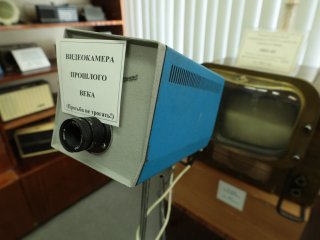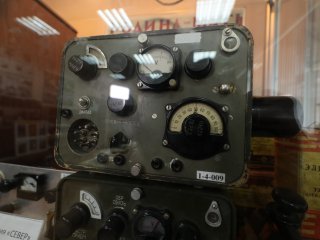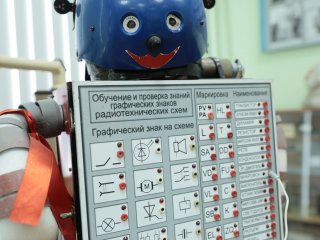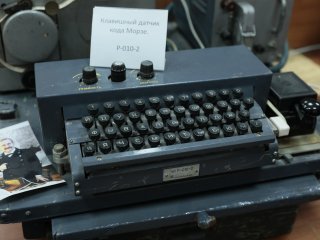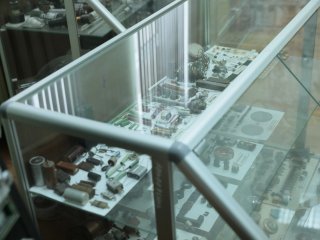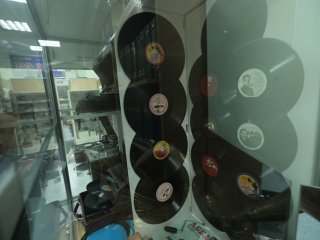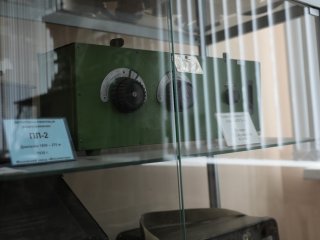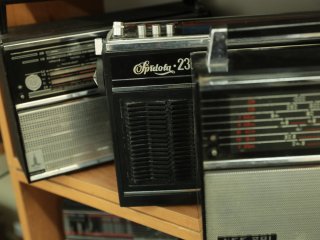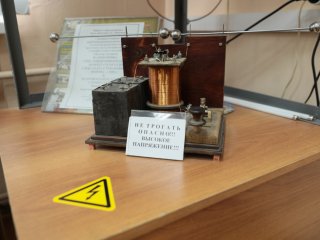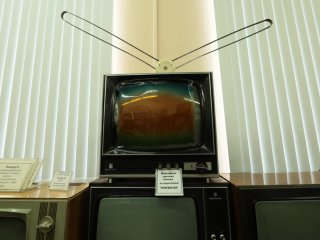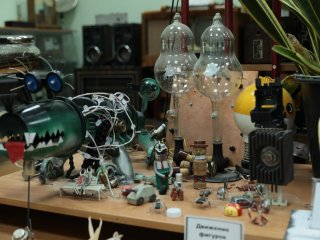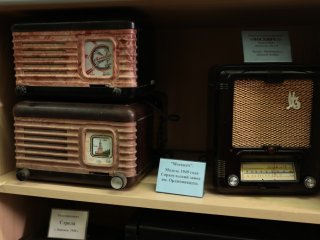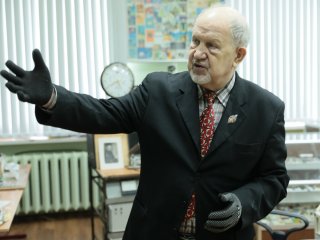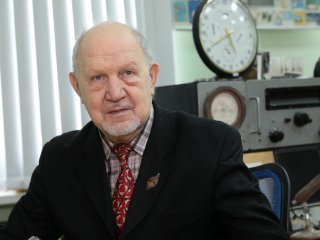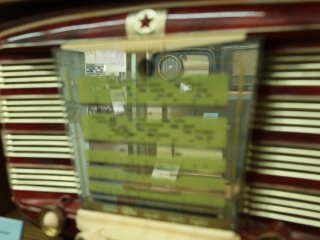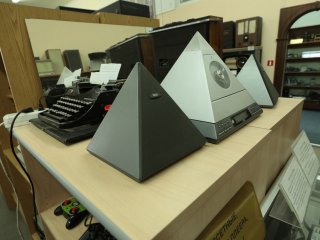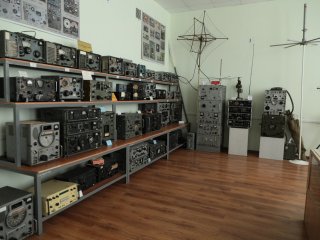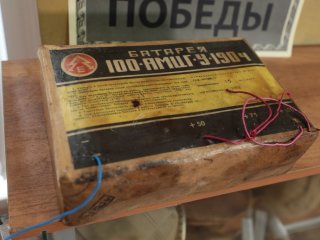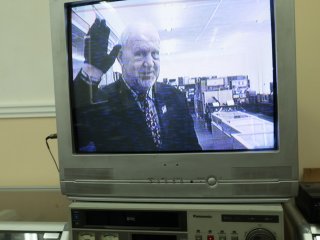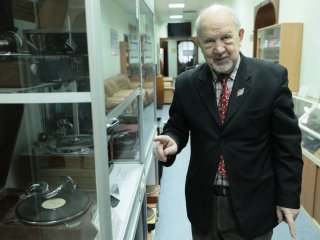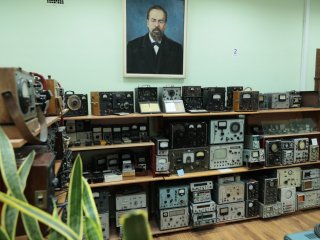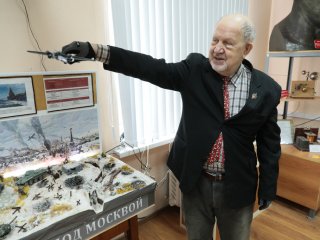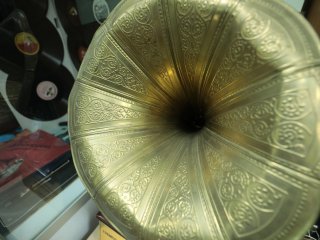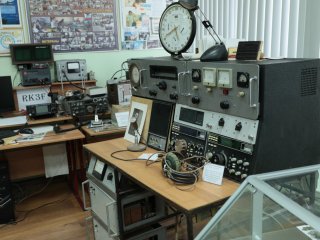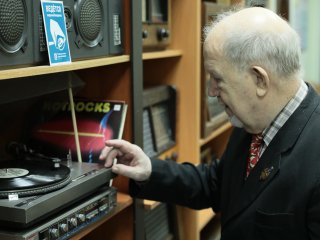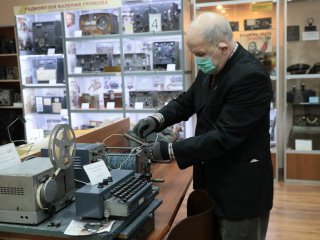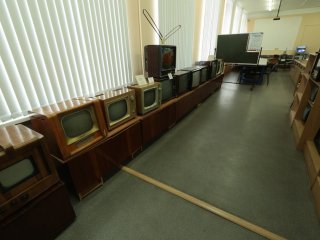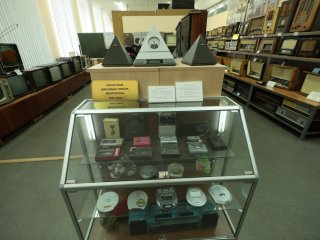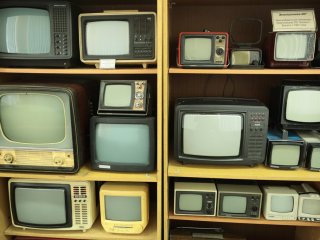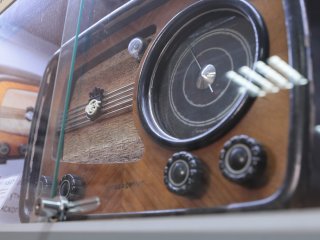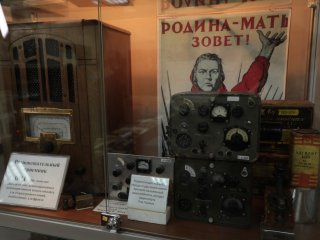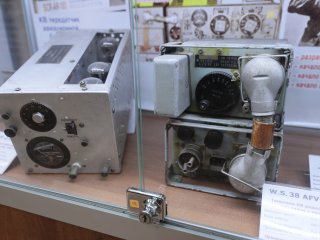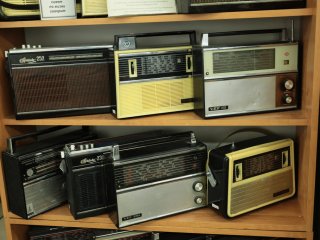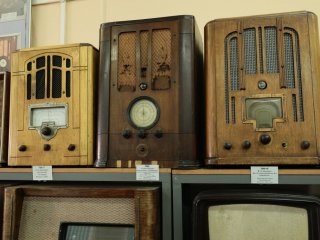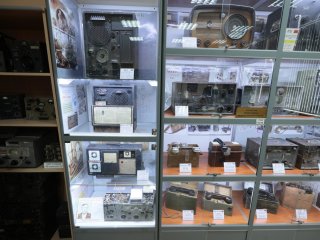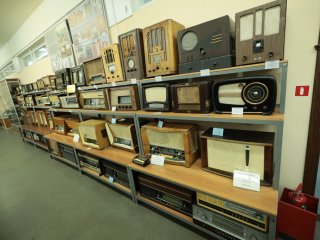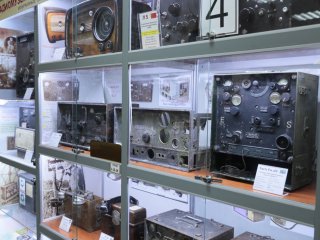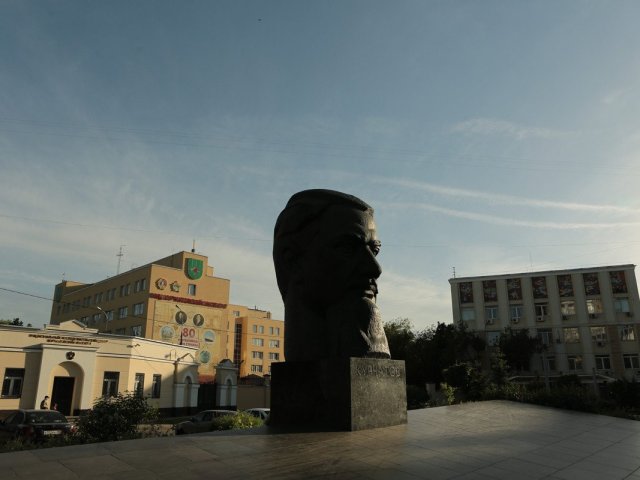Yevgeny Vasilyevich Sukhoverkhov
Photo by Nikolay Malakhin, Scientific Russia
Once, amateur radio has been a very popular hobby. Does anybody keep the ball rolling today? Does this hobby have future? Commentaries of Yevgeny Sukhoverkhov, head of Radio Electronics Museum Complex under Vostrukhin Communication College No 54. Yevgeny Sukhoverkhov has recently celebrated his 80th birthday. For over 40 years, he has been accumulating radio electronic devices for the museum. The history of museum was tricky enough. To gather a community of radio amateurs and find premises that it deserves, the museum has been moving from place to place several times. Every time, its founder had to transfer precious exhibits hiring several trucks and look for a place for each of them anew. However, his meticulousness and commitment to success allowed him to gain the upper hand.
– Yevgeny Vasilyevich, please tell me about the history of creating the museum complex.
– The history of this museum looks very interesting. There was the Central Radio Club of the USSR named after Ernst Krenkel before. I worked in this club. My last job there was the position of deputy head and director of technical department. Being in charge of technical department, I managed to assemble various radio devices. At first, I did it just for fun, but later decided to collect the equipment and create a museum. It so happened that a good deal of equipment had accumulated over several years. The main showpieces were the ones handed over to us by the relatives of late E.T Krenkel – radio operator, radio amateur, Hero of the Soviet Union. This is how it all began. The Central Radio Club worked as a subdivision of Russian Army, Airforce and Navy Volunteer Society (DOSAAF). The Society was the base supplying the club with everything it needed. Later, DOSAAF was transformed into ROSTO (Russian Defense Sports and Techniques Organization) which considered the Club useless and it was closed. I had to save the museum. Here, the further history of the museum began.
First, the showpieces were transferred to one of the schools – the one named after V.V. Talalikhin. A year later, the museum was closed again. The exhibits were getting rusty in the storeroom. I gathered a commission of radio amateurs and we started looking for a way out. Finally, the museum was transferred to Education Center No 1685 with Natalia Dikareva being the director of it, and the museum gained momentum there. At that time, there was no radio club in Moscow, and our museum was used as the one. Radio fans gathered there and naturally would never come empty-handed. They would bring with them some equipment, both military and consumer devices.
I saw that three exhibiting areas are possible: equipment for radio fans, military one and consumer devices. Thus, a decision was made to split the fund into three museums.
These three museums were registered via the education department, and the school allocated specious enough room to us. However, School No 1685 was also closed, and we had to pack the equipment and load it onto the trucks again. It took me a long time to find the appropriate premises, as we needed 150-200 square meters, while the offers made to us envisioned only 40-50 m2. Finally, we got acquainted with the administration of College No 54.
They allocated the assembly hall to us; we completed the reconstruction of it, and got a brilliant museum. Believe it or not, but the building was taken away from the college in less than a year! We had to pack the exhibits and transfer them to another premises. Thanks to director of the college I.A. Pavlyuk, a whole floor in another building of the college was given to us. We had to hire 20 trucks to transfer all of the showpieces. We had to renovate the new premises by way of removing the doors and installing arcs to make it look like a museum. What is interesting, the final variant turned to be the best one, because we found ourselves at the communication college. The museum is devoted to radio equipment, so we got into the right place.
At present, the students of the college study radio communication, radio electronics and computers, so I feel relieved. However, it is hard for me to remember the past troubles.
Today we have a museum complex: it consists of Krenkel Museum of Radio Fans, the main museum, the one devoted to the history of military equipment and the one of consumer radio electronic devices. However, it presents a sort of problem: the museums are many, while the kids get tired quickly, so we have to show the exhibits to them quickly, actually on the run.
Recording of the interview at the hall of consumer electronics
Photo: Nikolay Malakhin, Scientific Russia
Showpieces demonstrated at the hall of consumer electronics
Photo: Nikolay Malakhin, Scientific Russia
– Yevgeny Vasilyevich, you have mentioned that your museum consists of three parts. What part of it we are now in? What can the visitors see there?
– Now, we are in the hall of consumer electronic devices. It is the largest museum in terms of the number of showpieces. Here, you can see radio receivers of 1930s, tube radio sets, as well as the ones using semiconductors and chips, playback equipment, reel, cassette and disk tape-recorders, television sets, television and cinematographic equipment, computers, etc. This is what is demonstrated here. By the way, many of the devices are in operating condition, and we can switch them on from time to time.
– - Before the interview, you have told us that the showpieces were collected for about 40 years. Please tell me how you have got them? Did the people just bring them to you for free, or you had to buy them out or assemble out of different parts?
– We have already had all that you see. At the Central Radio Club, we assembled mostly military equipment and amateur radio sets. The consumer equipment was obtained later, when we settled at School No 1685, and radio fans started visiting our museum as a club. At that time, consumer electronics began being demonstrated.
There were cases when we purchased the showpieces at a rock-bottom price or exchanged it. However, most of the devices were donated to us. That is why I consider the whole fund of our three museums as the ownership of radio fans.
– Do you have a favorite showpiece, the one that you consider the gem of your collection?
– You know, we have very many such exhibits. Yet, my favorite showpiece is Moskvich radio set. It is a small receiver produced in 1950s, when I was a young radio fan. My amateur radio activity actually began with this very device. I turned my Moskvich into a radio transmitter and went in for radio-hooliganism. That is why it is of sentimental value for me. However, each of the showpieces has its own story.
Moskvich radio sets
Photo: Nikolay Malakhin, Scientific Russia
– Can radio fans assemble a set out of any scratch? I have read that a radio set can be made even of an empty candy box.
– One of the sections of the central museum is devoted to amateur radio activity. Self-made radio sets, stations, etc. are demonstrated there. Visitors can see all kinds of showpieces – from simple devices to complex transceivers. Transceiver is a radio station using common units. Our museum can boast of a large collection of transceivers, i.e. self-made devices which sometimes may outstrip Japanese equipment in parameters. They may be worse in external design, yet better in characteristics (like sensitivity, selectivity, etc.) if compared to factory products, as radio fans are meticulous people. They would make a radio set and then start modifying it, reading special literature and sharing ideas. Finally, they get an excellent, very sensitive device. However, it is a thing of the past.
Now, radio fans reason in a different way. In the past, it took a lot of time – up to several months – to make a radio set. Today, they say, “We will earn money for a week, buy a Japanese device and would operate it.” This is how it happens nowadays. All that we have done before is a part of history. At present, almost each radio fan has a foreign unit with excellent parameters, like frequency stability, which is very important, as the sets are used for digital data communication as well. WE have used telegraph keys and microphones before, while now radio fans use digital communication too. By the way, there are many kinds of digital communication, while the respective topic is very interesting. There are such kinds that allow for receiving the information even though the signal is very weak.
Showpieces at the hall of consumer electronic equipment
Photo: Nikolay Malakhin, Scientific Russia
As we are talking about radio fans, it stands to mention that the radio fan community is the most reliable alerting system for emergency situations. It is because there are very many of them sitting with earphones on and communicating with each other.
"Internet or any other communication system, amateur radio network cannot be switched off!"
The evidence of it could be found during the earthquake in Armenia for instance… When the catastrophe broke out, the communication went off. So, we sent radio fans with their radio sets to Armenia. They communicated with the relatives of victims from there informing them about what had happened, the addresses, etc. The world amateur radio network exists today and will exist forever. It cannot be turned off!
Their work is as follows. A man, say, gets information and wants to transmit it to somebody. If it cannot be done directly, he/she transmits it to another radio fan who, in his/her turn, passes it on to the third one, etc. Finally, the last radio fan delivers information to the intended addressee. This is what the amateur radio network is like.
Before, radio fans would develop radio equipment. At that time, the Central Radio Club organized all-union radio exhibitions. This trend started in 1930s. The radio fans from all over the Soviet union would bring their sets to VDNKh (All-Union Exhibition of Achievements of National Economy). The exhibition consisted of 15 sections: medical equipment, household appliances, the show of children’s crafts, etc. It was of interest for specialists working at the plants and research institutes. They would visit the exhibition and sometimes noticed things surprising for them and found the ideas they needed. They concluded agreements with radio fans and entered amendments to the design of the equipment developed by them. Thus, radio fans also made their contribution to the development of radio-electronics in our country.
Shared-use radio station.
Photo by Nikolay Malakhin, Scientific Russia
– – Yevgeny Vasilyevich, your museum complex has a shared-use radio station of its own. Any person can connect to it. Do you continue to use it for broadcasts?
– Shared-use radio station is a station that can be used by anyone for carrying out communication session under the guidance of a specialist. Even a visitor of museum may sit at the table and make radio contact under the guidance of museum official using this equipment.
There are very many such radio stations in our country. Each radio club has a shared-use radio station. Many schools have such equipment, unlike individual radio stations. Individual radio station is assigned to some specific person who has his/her own call sign or code name and works individually. Our radio station is intended for the guests, so to say. Any visitor can use it if he/she wants to.
Exhibits of the hall devoted to museum radio equipment pieces
Photo by Nikolay Malakhin / Scientific Russia
– The third part of your museum is devoted to military communication equipment. What showpieces are demonstrated there?
– We have many interesting exhibits at the museum devoted to military communication equipment. For instance, we have a unique showpiece that has been recently brought by a radio fan. It is a self-made radio receiver set assembled by the partisans in the forests of Belarus for the purpose of listening to the broadcasts of Soviet Information Bureau from Moscow. You know what the fascists did. They would take a village by storm and say, “Okay, we have won the war. Moscow his occupied.” The partisans listened to the broadcasts from Moscow and tell the truth to local residents. They would paste up leaflets informing the population about the real state of things. It was a big job! Just imagine, if it were not for the partisans, the local residents would think that Moscow had been conquered, and the Nazi Germany had won the war. Thanks to them, the people learned which city was liberated, where our soldiers had gone into the offensive, etc. The morale was restored. The people hoped for the better and looked forward to the victory which finally came.
So, we have such a showpiece, and it is not alone. We have many radio sets working during the World War Two. There are exhibits with their own story, like Sever radio station. We knew a veteran of war, a woman who was a young girl during the war. Just imagine, she was a radio operator who penetrated into the rear of the enemy with this very radio station having jumped with a parachute from the airplane. The radio set is small, but the batteries are heavy. The fascists noticed and chased her. However, she managed to accomplish her mission having transmitted the information and remained alive. It is only one episode, but there are many such ones.
– Yevgeny Vasilyevich, what should the young people go in for amateur radio activity for today? Do they need this new hobby, the one they might have known nothing before?
– Young people visit our museum very often. Now, there are no visitors due to epidemic. However, if you came last year, you would see a crowd of school children. While giving classes to them, we always say that radio is the basis of everything. One should know when and how it was invented and developed to like and respect radio. However, one cannot like and respect it without having tried a radio set in operation. Someone of you may want to become a radio fan.
You know, there is a tongue-twister: auto-moto-cycle-photo-cine-radio-mechanic. It describes the true nature of a radio fan very accurately. This person can fix up any device or system – plumbing equipment, radio set, electric tea pot, refrigerator, washing machine, etc. He/she is capable of doing everything, as the radio fan is a technical person in the first turn trying to bring everything he/she is doing to conclusion. One has to have patience to become a radio fan. At first, this hobby may seem uninteresting, even boring: you start soldering something, it is not working out, and you quit the activity… However, one must solder the circuit to the end, bring the idea to the logical conclusion and make the equipment produce the required effect. Hearing a sound from it, you will finally get interested, want to assemble another device, start using various tools and finally become a man who is capable of repairing everything, a good husband and father.
– Are there girls among radio fans?
– Yes, there are, but they are few. When we work on-air and hear a girl’s voice, the so-called pie-lab (term of radio fans) immediately occurs. It is the situation when many radio stations connect to one station to communicate with it. She is listening and responds to the radio fans whom she hears better. The voice of a woman makes us, radio fans, happy. Fundamentally, it is the same as in the everyday life.
– Thank you very much, Yevgeny Vasilyevich for the interview. Our conversation has been really very exciting, and I hope that after the long break caused by the epidemic new visitors including young people and all those who are interested in radio will come to your museum again.
